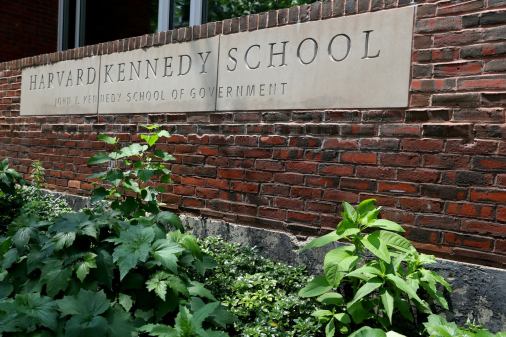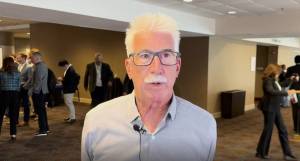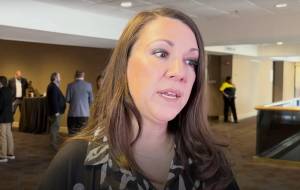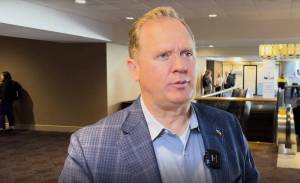Harvard spotlights innovative state, local tech programs

The Harvard Kennedy School’s Ash Center for Democratic Governance and Innovation had a problem: They were turning away too many applicants for their annual Innovations in American Government Awards program, leaving a lot of smart ideas out of the spotlight.
In response, the center started a new award last year to highlight government programs that make governing easier and more efficient, without necessarily changing the way it does business. They called it Bright Ideas.
“We get hundreds and hundreds of entries every awards cycle, and we wanted to find a way to recognize programs and initiatives that are innovative in their own right,” Daniel Harsha, the Ash Center’s associate director for communications and government relations, told StateScoop.
The 2015 Bright Ideas award program recognized more than 120 programs at some level of government. Twenty-eight of the recognized programs dealt directly with state and local government technology.
From Kansas’ Shawnee County Awesome Queue platform, which allows citizens to use their smartphones or computers to reserve a place in line at the county’s motor vehicle office, to South Carolina’s Department of Mental Health’s Telepsychiatry Consultation Program, which allows citizens to conduct behavioral assessments through videoconferencing, the awards recognized programs at the city, county and state level.
The awardees for Bright Ideas are pulled from the applicants to the center’s Innovations in American Government award program and are “carefully reviewed” by a team of judges consisting of Harvard University faculty members and former government officials from across the country.
“We receive a lot of information from applicant entities,” Harsha said. “They’re great, bright ideas, and they’re ideas that can be replicated across government. We feel [the Bright Ideas] really have a chance to improve and innovate the way that government performs.
To facilitate that interaction and replication, the center has also established the Government Innovators Network, which connects innovators across the jurisdictional spectrum to allow them to communicate and share ideas. The network also serves as a repository for all the past Innovations in American Government and Bright Ideas award applications.
“We see it as a storehouse of information about innovations, but also as a platform to allow innovators to connect and share their particular innovations,” Harsha said. “We feel that federal colleagues have just as much to share at the state level as state colleagues have to share with their federal colleagues.”
The theme of the awards programs and the network, Harsha said, is to show that through data collection and analysis, governments at any level can make government more innovative and efficient.
“The main point is that innovation isn’t just in the domain of the federal government or large state and local governments,” Harsha said. “You don’t have to be the Department of Homeland Security or the city of New York or the state of California to integrate technology in government management and the delivery of government services. Every government can collect and harness data. The costs have come down tremendously, and the knowledge has been diffused throughout the ranks of state and local governments.”
For a complete list of the Ash Center’s state and local technology bright ideas, visit the next page.
The Harvard Kennedy School’s Ash Center for Democratic Governance and Innovation’s 2015 Bright Ideas in State and Local Government Technology
(Briefs and names courtesy of the Ash Center.)
- 2013 Neighborhood Board Digital Elections, city and county of Honolulu
- This program converted what has been a historically paper- and postal-based election process to an all-digital one. Eligible voters are now mailed a passcode with which they access a digital ballot (either online or via touch-tone phone), make their selections, and submit the ballot to a secure website. The cost of conducting the election has decreased significantly because of this initiative, due to a reduction in paper, return postage and processing and tabulating ballots.
- 2014 Multi-City Innovation Campaign, Nashville
- The 2014 Multi-City Innovation Campaign is a partnership of the cities of Boston, Nashville; Palo Alto, California; and Raleigh, North Carolina. Their vision is to create a process and environment where developers can build scalable and sustainable civic apps that address shared challenges across communities through a unique low-dollar procurement approach.
- Awesome Queue, Shawnee County, Kansas
- Awesome Queue is an internally developed queuing system that allows members of the public to register for a place in line at our county motor vehicle office via an onsite kiosk, personal smartphone, or Internet-connected computer. As part of the registration, customers can also opt to be notified by text message with information about when their turn for service is about to arrive. Users of the system no longer have to stand in long lines but instead can go about their business until just shortly before they are called to the service counter.
- Block Play, Pierce County, Washington
- Block Play is a research-based learning program that fosters curiosity, critical thinking and learning readiness for early learners. By reaching out to at-risk children, librarians help prepare children for success in school and in life, with a focus on literacy and STEM skills. Training for parents to guide independent block play is offered, as well as community sessions, to maximize the benefits of this play for participant children.
- Block Walk St. Joe, Mo-Kan Regional Council, Missouri
- Block Walk St. Joe is a grassroots effort designed to create a livable, sustainable and walkable community in St. Joseph, Missouri. The low-cost project brings together a guided tour app of the downtown area with revitalization and volunteer efforts to create impactful and valuable community initiatives and engage citizens with their community.
- Broadcast Real-time Inspection Transparency Emails, Aurora, Illinois
- With this program, Aurora can send e-mails to the entire private sector team of any contractor automatically for any inspection activity. These emails allow the city to convey a message to all parties with web links to online tools and point of service surveys. They also provide contractors with access to information on how to make the inspection process as smooth as possible, including a list of top ten failed items that enables them to proactively address these issues, saving money and time for both the contractors and the city.
- Business Portal, city and county of San Francisco
- The Business Portal is a comprehensive, online resource for starting and growing a business in San Francisco. By clarifying the steps to compliance; allowing easier access to licenses, permits and requirements; and providing a wealth of resources, the portal makes the process of starting and managing a business more efficient for the entire business community and encourages economic growth.
- Citizen Survey Data for Performance, Kansas City, Missouri
- Kansas City, Missouri, has redesigned its citizen survey to ensure community feedback is relevant to city departments and their operations. Survey data, collected quarterly, is now fully integrated into the city’s performance management program and shared at monthly, public KCStat meetings, where departments share their progress with the mayor, city manager and City Council. Citizens can interact with these meetings through live streaming and social media to raise their concerns directly with decision makers.
- Civic User Testing Group, Chicago
- The Civic User Testing Group is a set of Chicago residents who get paid to test civic apps. Smart Chicago works with residents and civic tech developers to make and test software that helps improve quality of life for residents. Members receive training on basic technology skills, provide feedback and perform beta testing on apps and government websites.
- Crash Data Repository, Connecticut
- The Connecticut Crash Data Repository (CTCDR) is a web tool that provides access to motor vehicle crash data collected by state and local police. The CTCDR provides members of the public and transportation safety community the ability to query, analyze and export timely, accurate, complete and uniform crash data.
- CultureBlocks, Philadelphia
- Setting out to visualize the relationship between cultural activity in Philadelphia and its economic and social fabric, this government partnership first created an online mapping tool loaded with 50 datasets to identify the unique solutions the city’s creative economy can provide and then conducted analytic research to catalyze urban recovery and lead to additional neighborhood investment. CultureBlocks, managed by the Philadelphia Office of Arts, Culture and the Creative Economy, aggregates cultural assets and demographic information in a single, digital forum. Individuals can use CultureBlocks to make strategic investment decisions and identify cultural disparities across the city of Philadelphia in a highly visual, relationship-driven manner.
- DMH Telepsychiatry Consultation Program, South Carolina
- With initial funding from the Duke Endowment, the South Carolina Department of Mental Health Telepsychiatry Consultation Program works with participating hospital emergency departments, or EDs, and patients to address overcrowding and scarce resources through videoconference-based behavioral assessments. Many patients can be safely discharged from the hospital and returned to their families the same day they are assessed, cutting lengths of stays substantially. The program psychiatrist supplies the patient and ED staff with their written clinical recommendations and also with information about the local mental health center and other local resources. In turn, the mental health center is able to immediately access the electronic record of the psychiatrist’s assessment and recommendations. Patients seen through the program who are discharged from an ED have a far higher rate of following through with aftercare at a mental health center. For those patients who are retained in the emergency department. The psychiatrist’s treatment recommendations have generally improved the quality of care they are receiving.
- DNA Hit Integration Program, county of San Diego, California
- The DNA Hit Integration Program is boosting prosecutions and jail time for defendants who commit multiple crimes and at the same time works to protect the innocent. By integrating a real-time DNA database with the district attorney’s case management system, prosecutors are better able to match defendants they are already prosecuting to additional crimes the defendants may have committed in separate incidents. This new data also gives prosecutors the ability to generate reports to track, manage and match the DNA data with defendants, as well as exclude suspects in a timely manner if DNA results do not implicate them.
- Establishing Joint Information Centers, Peoria County, Illinois
- The Central Illinois Public Information Officer Committee identified and established more than 100 joint information centers in order to prepare the five-county region for a large-scale disaster. This initiative expedites the release of accurate and timely public information during the immediate aftermath of disaster. These centers are established in collaboration with counter private and public organizations, who meet certain criteria including guaranteeing 24/7 access to the facility to all committee members, as well as use of their office equipment.
- FastTrack Cloud Computing Program, Washington, D.C.
- In order to meet their agencies and constituents’ demands for modern, web-based applications, the District’s government moved to introduce cloud computing technology that was simple to implement so that it would reduce workers’ dependency on IT staff. Savvy workers can use the QuickBase platform — a rapid application development environment — to implement their own small applications. This initiative has resulted in 1,500 Web-based applications over the past three years, most them built by non-IT workers in approximately 30 percent of the time it takes to build traditional software.
- Go Code Colorado, Colorado
- The Go Code Colorado model redefines procurement by putting competitive processes in the hands of competitor-savvy entrepreneurs, not risk-averse government employees. The model yields multiple, beneficial outcomes including returning value to taxpayers, actively opening data sources, creating new businesses and building a stronger business climate.
- I-Jury: Online Juror Impaneling, Travis County, Texas
- I-Jury is an online system designed to facilitate jury service. Summonsed jurors go online to qualify for service, screen for exemptions, complete the juror questionnaire and orientation, specify personal and business conflict dates and receive, both online and via email, a specific judge, courtroom and trial date reporting instructions.
- iMesa: Imagine, Invest, Improve, Mesa, Arizona
- The city of Mesa wanted to engage residents in improving the community. iMesa was the city’s grassroots citizen investment and improvement effort to develop transformational community projects that invigorate the community. A free crowdsourcing software was used as a platform to communicate the status of ideas.
- Innovation Exemption, Washington
- This policy exempts select technology and services purchases up to $100,000 from existing procurement rules for purposes and experimentation to expand the pool of vendors and introduce new technologies and ideas to the state.
- LinkNYC/Reinvent Payphones, New York City
- The Reinvent Payphones Design Challenge invited the public to create prototypes that imagine the future of city payphones in planning what will replace them. The competition resulted in over 125 innovative submissions and wide engagement. The ideas also helped to inform the city’s RFP to transform payphones into Wi-Fi hotspots and communication hubs, eventually leading to the creation and passage of the LinkNYC program, a first-of-its-kind network that will bring the fastest available municipal Wi-Fi to millions of New Yorkers, small businesses and visitors.
- Mobile Mental Health Service Delivery, Riverside County, California
- The county’s Department of Mental Health identified an urgent need for prevention and early intervention services to address the needs of underserved populations, especially young children. To improve access to effective mental health care, mobile clinics now provide services to families with children through the age of seven in geographically isolated regions using evidence-based approaches that support social and emotional development.
- My Resource Connection, Johnson County, Kansas
- My Resource Connection is a data-sharing Web app developed by Johnson County staff. It allows a case manager to obtain information about other county services a particular client is receiving, contact information of other professionals serving that client, information about other individuals residing in the client’s home, and potential services from community-based organizations that might be of benefit to the client.
- my.hi.gov — my.hawaii.gov, Hawaii
- my.hawaii.gov delivers “Your Government — Your Way” in an innovative approach to the gasification of government, leveraging existing portal architecture and a single sign-on system. The site integrates with seven departments and includes a rich history of business conducted online with the state, allowing users to create a single, personalized plan to interact with government and local businesses, get notifications and updates and view transaction histories without having to search dozens of websites, saving time, money and paper.
- North Carolina Innovation Center, North Carolina
- The North Carolina Innovation Center (iCenter) is a working lab where state employees, agency chief information officers, students and industry collaborate in a “try before you buy” approach to investing in technology systems. The iCenter is dedicated to identifying solutions that drive efficiency and transform the way government delivers services to its citizens.
- Online Property Assessment Appeal System, Monmouth County, New Jersey
- The Monmouth County Online Assessment Appeal System is a multijurisdictional system developed to facilitate efficient electronic filing of assessment appeals with county tax boards, associated municipal assessors and municipal clerks. As a Web-enabled system, it provides enhanced “always-open” service to the taxpayer while leveraging existing public records to ensure accurate record indexing.
- Shared Services Electronics Records Repository, Tompkins County, New York
- With its initiative to create a digital records center rather than a traditional physical building, the Shared Services Electronic Records Repository was able to save Tompkins County $5.5 million. The county has enacted a digital archiving records program and is now able to support a hosted solution within the system for use by other local government agencies via a secure Internet connection. Some cost savings and services shared with smaller municipalities include the sharing of the county’s records management and IT knowledge, infrastructure, hardware, software, user support, disaster recovery solution, backup, improved process efficiencies, and a user consortium for design and support issues.
- Silicon Valley Talent Partnership, San Jose, California
- The Silicon Valley Talent Partnership creates, sources and manages innovative and meaningful pro bono partnerships between private-sector volunteers and civic agencies, capitalizing on the unique opportunity to restore local government’s capacity to innovate, enhance serve delivery, and ultimately improve the quality of life of residents and communities across Silicon Valley.
- Youth Technology Program, Santa Monica, California
- Youth Tech is a partnership of the city, school district and local technology companies that is conducted at local startup incubators in Santa Monica and that provides a six-week technology training program to recent high school graduates and select juniors. Students form teams, develop a project that has a community focus, and are trained by Information Systems Department staff and representatives from local technology firms.
- This program converted what has been a historically paper- and postal-based election process to an all-digital one. Eligible voters are now mailed a passcode with which they access a digital ballot (either online or via touch-tone phone), make their selections, and submit the ballot to a secure website. The cost of conducting the election has decreased significantly because of this initiative, due to a reduction in paper, return postage and processing and tabulating ballots.
- The 2014 Multi-City Innovation Campaign is a partnership of the cities of Boston, Nashville; Palo Alto, California; and Raleigh, North Carolina. Their vision is to create a process and environment where developers can build scalable and sustainable civic apps that address shared challenges across communities through a unique low-dollar procurement approach.
- Awesome Queue is an internally developed queuing system that allows members of the public to register for a place in line at our county motor vehicle office via an onsite kiosk, personal smartphone, or Internet-connected computer. As part of the registration, customers can also opt to be notified by text message with information about when their turn for service is about to arrive. Users of the system no longer have to stand in long lines but instead can go about their business until just shortly before they are called to the service counter.
- Block Play is a research-based learning program that fosters curiosity, critical thinking and learning readiness for early learners. By reaching out to at-risk children, librarians help prepare children for success in school and in life, with a focus on literacy and STEM skills. Training for parents to guide independent block play is offered, as well as community sessions, to maximize the benefits of this play for participant children.
- Block Walk St. Joe is a grassroots effort designed to create a livable, sustainable and walkable community in St. Joseph, Missouri. The low-cost project brings together a guided tour app of the downtown area with revitalization and volunteer efforts to create impactful and valuable community initiatives and engage citizens with their community.
- With this program, Aurora can send e-mails to the entire private sector team of any contractor automatically for any inspection activity. These emails allow the city to convey a message to all parties with web links to online tools and point of service surveys. They also provide contractors with access to information on how to make the inspection process as smooth as possible, including a list of top ten failed items that enables them to proactively address these issues, saving money and time for both the contractors and the city.
- The Business Portal is a comprehensive, online resource for starting and growing a business in San Francisco. By clarifying the steps to compliance; allowing easier access to licenses, permits and requirements; and providing a wealth of resources, the portal makes the process of starting and managing a business more efficient for the entire business community and encourages economic growth.
- Kansas City, Missouri, has redesigned its citizen survey to ensure community feedback is relevant to city departments and their operations. Survey data, collected quarterly, is now fully integrated into the city’s performance management program and shared at monthly, public KCStat meetings, where departments share their progress with the mayor, city manager and City Council. Citizens can interact with these meetings through live streaming and social media to raise their concerns directly with decision makers.
- The Civic User Testing Group is a set of Chicago residents who get paid to test civic apps. Smart Chicago works with residents and civic tech developers to make and test software that helps improve quality of life for residents. Members receive training on basic technology skills, provide feedback and perform beta testing on apps and government websites.
- The Connecticut Crash Data Repository (CTCDR) is a web tool that provides access to motor vehicle crash data collected by state and local police. The CTCDR provides members of the public and transportation safety community the ability to query, analyze and export timely, accurate, complete and uniform crash data.
- Setting out to visualize the relationship between cultural activity in Philadelphia and its economic and social fabric, this government partnership first created an online mapping tool loaded with 50 datasets to identify the unique solutions the city’s creative economy can provide and then conducted analytic research to catalyze urban recovery and lead to additional neighborhood investment. CultureBlocks, managed by the Philadelphia Office of Arts, Culture and the Creative Economy, aggregates cultural assets and demographic information in a single, digital forum. Individuals can use CultureBlocks to make strategic investment decisions and identify cultural disparities across the city of Philadelphia in a highly visual, relationship-driven manner.
- With initial funding from the Duke Endowment, the South Carolina Department of Mental Health Telepsychiatry Consultation Program works with participating hospital emergency departments, or EDs, and patients to address overcrowding and scarce resources through videoconference-based behavioral assessments. Many patients can be safely discharged from the hospital and returned to their families the same day they are assessed, cutting lengths of stays substantially. The program psychiatrist supplies the patient and ED staff with their written clinical recommendations and also with information about the local mental health center and other local resources. In turn, the mental health center is able to immediately access the electronic record of the psychiatrist’s assessment and recommendations. Patients seen through the program who are discharged from an ED have a far higher rate of following through with aftercare at a mental health center. For those patients who are retained in the emergency department. The psychiatrist’s treatment recommendations have generally improved the quality of care they are receiving.
- The DNA Hit Integration Program is boosting prosecutions and jail time for defendants who commit multiple crimes and at the same time works to protect the innocent. By integrating a real-time DNA database with the district attorney’s case management system, prosecutors are better able to match defendants they are already prosecuting to additional crimes the defendants may have committed in separate incidents. This new data also gives prosecutors the ability to generate reports to track, manage and match the DNA data with defendants, as well as exclude suspects in a timely manner if DNA results do not implicate them.
- The Central Illinois Public Information Officer Committee identified and established more than 100 joint information centers in order to prepare the five-county region for a large-scale disaster. This initiative expedites the release of accurate and timely public information during the immediate aftermath of disaster. These centers are established in collaboration with counter private and public organizations, who meet certain criteria including guaranteeing 24/7 access to the facility to all committee members, as well as use of their office equipment.
- In order to meet their agencies and constituents’ demands for modern, web-based applications, the District’s government moved to introduce cloud computing technology that was simple to implement so that it would reduce workers’ dependency on IT staff. Savvy workers can use the QuickBase platform — a rapid application development environment — to implement their own small applications. This initiative has resulted in 1,500 Web-based applications over the past three years, most them built by non-IT workers in approximately 30 percent of the time it takes to build traditional software.
- The Go Code Colorado model redefines procurement by putting competitive processes in the hands of competitor-savvy entrepreneurs, not risk-averse government employees. The model yields multiple, beneficial outcomes including returning value to taxpayers, actively opening data sources, creating new businesses and building a stronger business climate.
- I-Jury is an online system designed to facilitate jury service. Summonsed jurors go online to qualify for service, screen for exemptions, complete the juror questionnaire and orientation, specify personal and business conflict dates and receive, both online and via email, a specific judge, courtroom and trial date reporting instructions.
- The city of Mesa wanted to engage residents in improving the community. iMesa was the city’s grassroots citizen investment and improvement effort to develop transformational community projects that invigorate the community. A free crowdsourcing software was used as a platform to communicate the status of ideas.
- This policy exempts select technology and services purchases up to $100,000 from existing procurement rules for purposes and experimentation to expand the pool of vendors and introduce new technologies and ideas to the state.
- The Reinvent Payphones Design Challenge invited the public to create prototypes that imagine the future of city payphones in planning what will replace them. The competition resulted in over 125 innovative submissions and wide engagement. The ideas also helped to inform the city’s RFP to transform payphones into Wi-Fi hotspots and communication hubs, eventually leading to the creation and passage of the LinkNYC program, a first-of-its-kind network that will bring the fastest available municipal Wi-Fi to millions of New Yorkers, small businesses and visitors.
- The county’s Department of Mental Health identified an urgent need for prevention and early intervention services to address the needs of underserved populations, especially young children. To improve access to effective mental health care, mobile clinics now provide services to families with children through the age of seven in geographically isolated regions using evidence-based approaches that support social and emotional development.
- My Resource Connection is a data-sharing Web app developed by Johnson County staff. It allows a case manager to obtain information about other county services a particular client is receiving, contact information of other professionals serving that client, information about other individuals residing in the client’s home, and potential services from community-based organizations that might be of benefit to the client.
- my.hawaii.gov delivers “Your Government — Your Way” in an innovative approach to the gasification of government, leveraging existing portal architecture and a single sign-on system. The site integrates with seven departments and includes a rich history of business conducted online with the state, allowing users to create a single, personalized plan to interact with government and local businesses, get notifications and updates and view transaction histories without having to search dozens of websites, saving time, money and paper.
- The North Carolina Innovation Center (iCenter) is a working lab where state employees, agency chief information officers, students and industry collaborate in a “try before you buy” approach to investing in technology systems. The iCenter is dedicated to identifying solutions that drive efficiency and transform the way government delivers services to its citizens.
- The Monmouth County Online Assessment Appeal System is a multijurisdictional system developed to facilitate efficient electronic filing of assessment appeals with county tax boards, associated municipal assessors and municipal clerks. As a Web-enabled system, it provides enhanced “always-open” service to the taxpayer while leveraging existing public records to ensure accurate record indexing.
- With its initiative to create a digital records center rather than a traditional physical building, the Shared Services Electronic Records Repository was able to save Tompkins County $5.5 million. The county has enacted a digital archiving records program and is now able to support a hosted solution within the system for use by other local government agencies via a secure Internet connection. Some cost savings and services shared with smaller municipalities include the sharing of the county’s records management and IT knowledge, infrastructure, hardware, software, user support, disaster recovery solution, backup, improved process efficiencies, and a user consortium for design and support issues.
- The Silicon Valley Talent Partnership creates, sources and manages innovative and meaningful pro bono partnerships between private-sector volunteers and civic agencies, capitalizing on the unique opportunity to restore local government’s capacity to innovate, enhance serve delivery, and ultimately improve the quality of life of residents and communities across Silicon Valley.
- Youth Tech is a partnership of the city, school district and local technology companies that is conducted at local startup incubators in Santa Monica and that provides a six-week technology training program to recent high school graduates and select juniors. Students form teams, develop a project that has a community focus, and are trained by Information Systems Department staff and representatives from local technology firms.
Read the full list of Bright Ideas Awardees at the Ash Center






